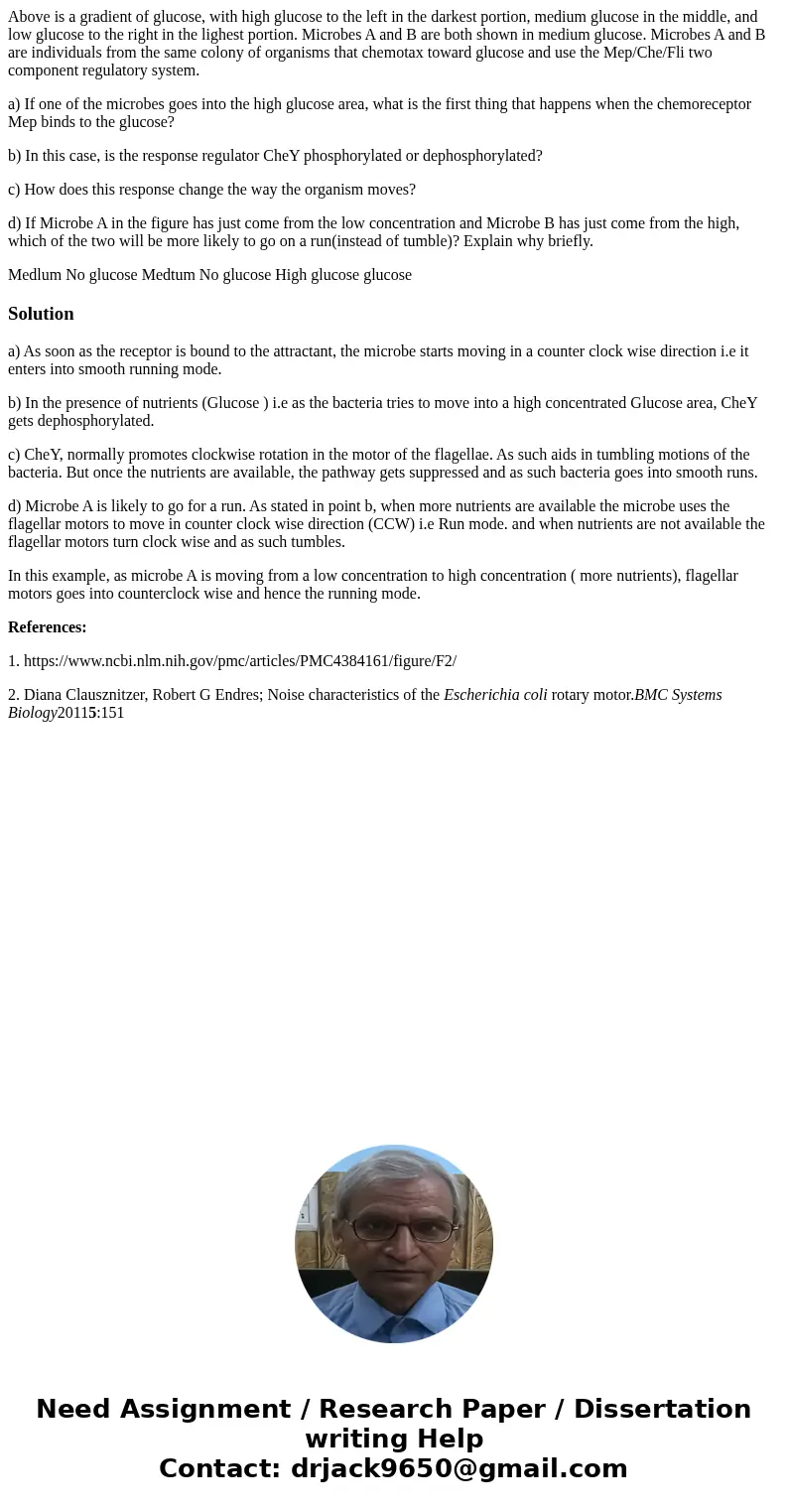Above is a gradient of glucose with high glucose to the left
Above is a gradient of glucose, with high glucose to the left in the darkest portion, medium glucose in the middle, and low glucose to the right in the lighest portion. Microbes A and B are both shown in medium glucose. Microbes A and B are individuals from the same colony of organisms that chemotax toward glucose and use the Mep/Che/Fli two component regulatory system.
a) If one of the microbes goes into the high glucose area, what is the first thing that happens when the chemoreceptor Mep binds to the glucose?
b) In this case, is the response regulator CheY phosphorylated or dephosphorylated?
c) How does this response change the way the organism moves?
d) If Microbe A in the figure has just come from the low concentration and Microbe B has just come from the high, which of the two will be more likely to go on a run(instead of tumble)? Explain why briefly.
Medlum No glucose Medtum No glucose High glucose glucoseSolution
a) As soon as the receptor is bound to the attractant, the microbe starts moving in a counter clock wise direction i.e it enters into smooth running mode.
b) In the presence of nutrients (Glucose ) i.e as the bacteria tries to move into a high concentrated Glucose area, CheY gets dephosphorylated.
c) CheY, normally promotes clockwise rotation in the motor of the flagellae. As such aids in tumbling motions of the bacteria. But once the nutrients are available, the pathway gets suppressed and as such bacteria goes into smooth runs.
d) Microbe A is likely to go for a run. As stated in point b, when more nutrients are available the microbe uses the flagellar motors to move in counter clock wise direction (CCW) i.e Run mode. and when nutrients are not available the flagellar motors turn clock wise and as such tumbles.
In this example, as microbe A is moving from a low concentration to high concentration ( more nutrients), flagellar motors goes into counterclock wise and hence the running mode.
References:
1. https://www.ncbi.nlm.nih.gov/pmc/articles/PMC4384161/figure/F2/
2. Diana Clausznitzer, Robert G Endres; Noise characteristics of the Escherichia coli rotary motor.BMC Systems Biology20115:151

 Homework Sourse
Homework Sourse